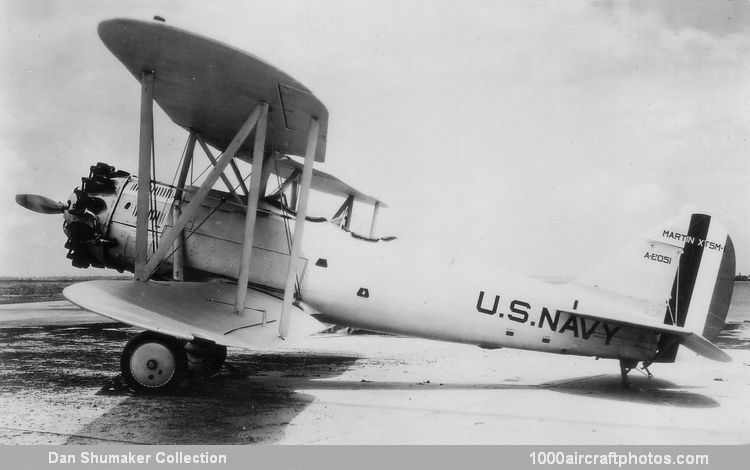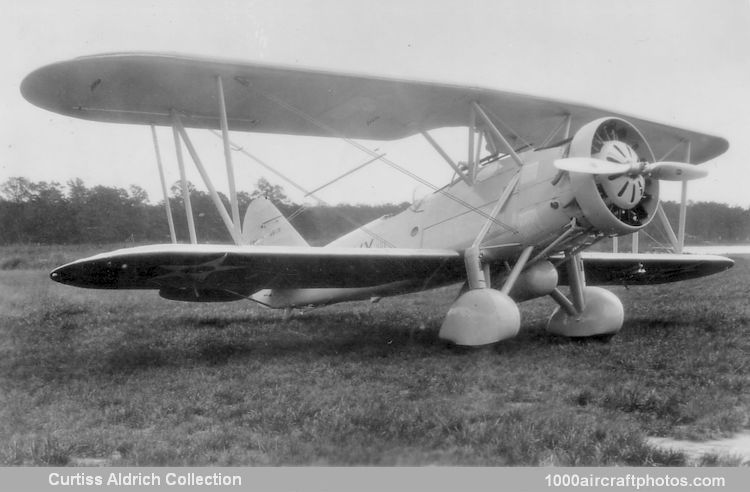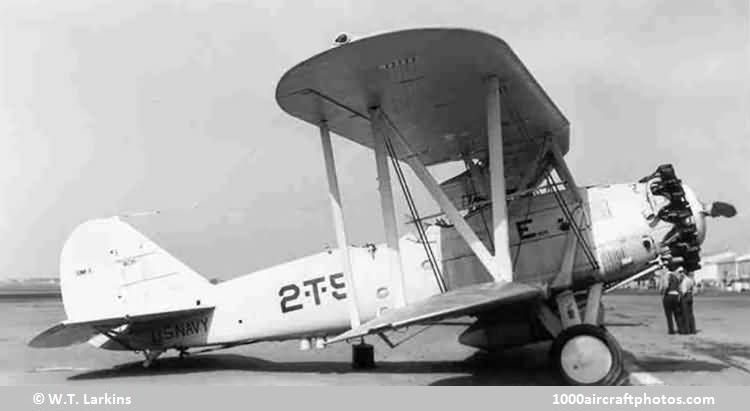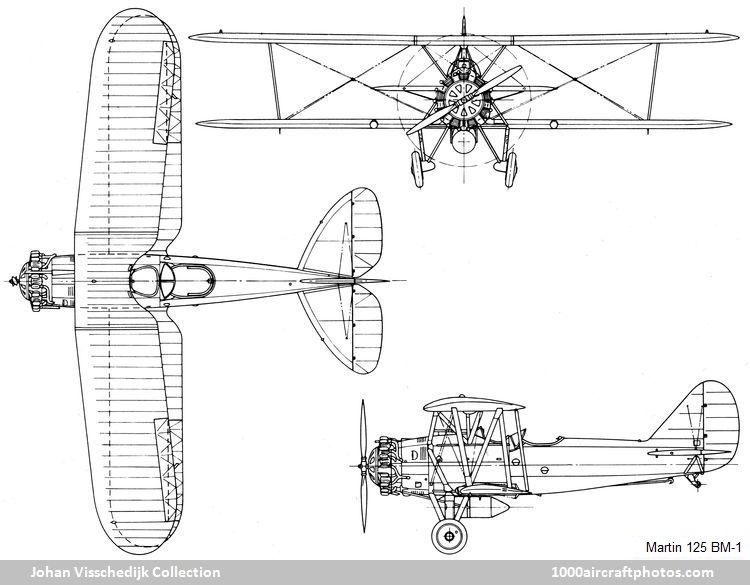10/31/2023. Remarks by
Johan Visschedijk: "Evolution of the dive-bombing technique, primarily by US Navy and Marine squadrons flying two-seat fighter-bombers, led in 1928 to a Bureau of Aeronautics (BuAer) specification for a special-purpose dive-bomber. BuAer design No. 77 specified an aircraft which could carry an 1,000 lb (454 kg) bomb (or a torpedo-the Navy was reluctant to abandon its tradition of using dual-purpose aircraft) and to be stressed to pull out of a terminal velocity dive even with the bomb still attached.
Single prototypes of the BuAer design were ordered from the Naval Aircraft Factory and the Martin company, respectively designated XT2N-1 and XT5M-1 (Martin Model 125) as two-seat dive-bombers. The XT5M-1 was a metal-framed biplane with fabric-covered wings and metal-covered fuselage and tail, the pilot and rear-gunner were seated in tandem, power plant was a 525 hp Pratt & Whitney R-1690-22 Hornet nine-cylinder air-cooled radial engine.
The contract for the XT5M-1 (BuNo. A-8051) was dated June 13, 1928, and the aircraft was first flown in 1929. On October 15, 1929, William H. 'Bill' McAvoy (a civilian test pilot for NACA) was testing the XT5M-1, when, during terminal dive test at 350 mph (563 kmh) at 8,000 ft (2,438 m), the lower starboard wing caved in, ripping an extensive hole. McAvoy staggered the aircraft back to the Martin field north of Baltimore, Maryland, landing at 110 mph (177 kmh) with full-left stick input and thereby saving the machine. After repairs it was delivered for trials at Anacostia NAS, where test of the XT5M-1, completed in March 1930, demonstrated its ability to pull out of a dive as required.
Martin 125 BM-1 (A-8879) (
Curtiss Aldrich Collection)
On April 9, 1931, a production order for twelve aircraft (s/n A-8879 to A-8890) was placed, these were designated BM-1 in the Navy's new Bomber category. They were similar to the XT5M-1 but had 625 hp R-1690-44 engines, ring cowlings for the engines, and wheel fairings, however, the cowlings and fairings were removed after the aircraft went into service with Navy Torpedo Squadron One (VT-IS) in 1932, serving aboard USS Lexington.
The first production BM-1 was delivered to the USN at Anacostia for acceptance testing in September 1931. The Navy refused to accept the type after A-8879 had a fatal crash during a test dive in September 1931. Martin modified the second production aircraft, used the same serial as the crashed aircraft and redelivered it to the USN in January 1932. The second A-8879 was accepted by the Navy on February 27, 1932.
Martin 129 BM-2 (
"2-T-5") (
W.T. Larkins Memorial Collection)
In the same year, deliveries began of sixteen (A-9170 to A-9185) BM-2s (Martin Model 129) which had been ordered on October 17, 1931; these differed only in small details from the initial version. With four additional BM-1s (9214 to 9217, the prefix 'A' was dropped) ordered later, these aircraft served alongside BM-1s in VT-1S, which was redesignated VB-1B (Bombing Squadron One) in 1934. A second unit, VB-3B, was equipped with BM-1s and BM-2s in 1934 and served aboard the USS Langley. Subsequently, these aircraft served with a number of other units; they were withdrawn from fleet service in 1937 and continued in use at shore bases for assorted test and utility duties until 1940 when the last BM-2 was scrapped.
In addition to the 32 production BM-1s and BM-2s, Martin built a single XBM-1 (9212) in 1933. Its experimental designation indicated its use for special tests by the NACA."



